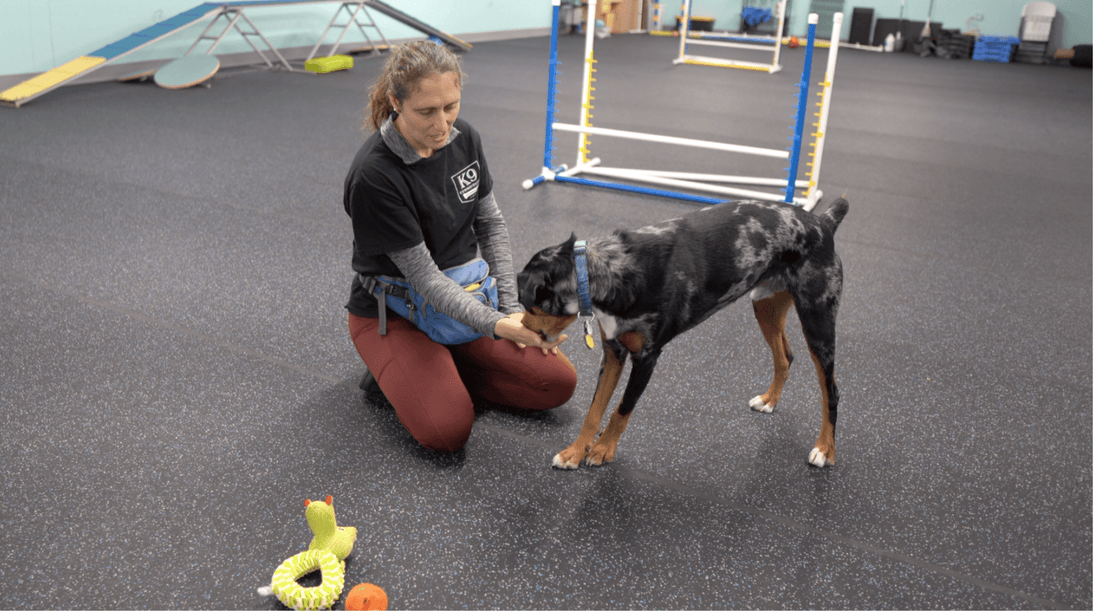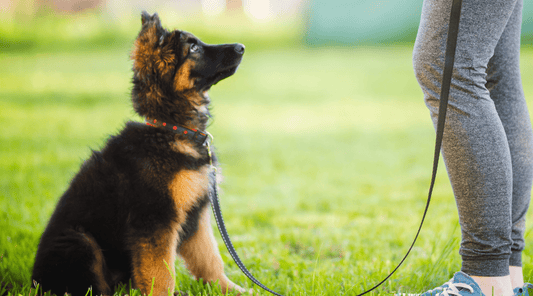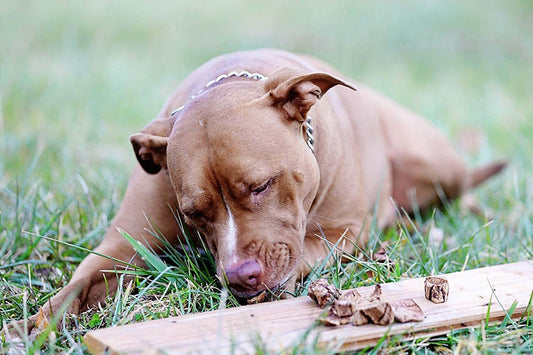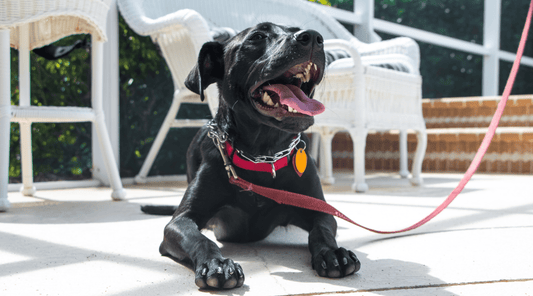How to Teach a Dog to Drop It: My Labrador's Sock Obsession
Dawn Miller May 08, 20254 Minute ReadI never thought I'd be that lady yelling "drop it!" at a dog who was proudly prancing around the yard with one of my partner's socks hanging out of his mouth like a victory flag. But here we are. If you’ve met my lab mix Bruno, you already know he believes laundry belongs to him. Bonus points if it’s been worn.
That’s how our journey to learning how to teach a dog to drop it began—one sock, one slipper, one surprise piece of firewood at a time. Thankfully, with a little consistency and a few well-timed beef lung dog treats, we turned that chaos into a game with rules.
And rules come with rewards when you follow them.
Here's how you can teach your dog to release anything—from that stolen rib bone at the neighborhood picnic to that mystery item they fished out of the bushes—with unexpected pizazz.
Why All Dog Lovers LOVE the "Drop It" Command
Whether your dog has a taste for socks, trash, or the occasional cat souvenir (don’t ask), knowing how to get them to release something on command can literally save lives. They say cats are the curious ones. But my 3 dogs would challenge them to a curiosity contest any day.
Left to their own devices, dogs will pick up and/or try to eat almost anything. It's instinct. In less abundant times, my dogs' ancestral wolves are scavengers. Bruno proved it when he ate half of a day-old burrito off a park bench—and paid for it in tummy troubles.
Drop it command is also just plain helpful when you’re playing fetch and don’t want to pry a tennis ball out of a slobbery jaw.
Plus, dogs love to work for rewards. Teaching “drop it” turns a stubborn habit into a cooperative game.
Drop it Vs. Leave It
These two commands are equally useful but have slightly different meanings to a trained dog.
Leave it means don't touch that. Stay away. Ignore it. And in the case of the neighborhood cats, don't chase that.
It can imply some sort of danger if they disobey. And they get a reward for ignoring something enticing.
Use the Drop it command when a dog has something they shouldn't in their mouth. Or you just want them to give it to you. It can be playful and lighthearted. And when you say it cheerfully, they think it's a game.
Bruno thinking: Oh, you want me to drop this rotisserie chicken I just found lying around on the dining room table? I bet I'll get a tasty reward if I do.
How to Teach a Dog to Drop It
Step 1: Start with Something Safe and Boring
Begin with a toy or object your dog likes—but not loves. The goal is to build the behavior before the stakes get high.
- Hand them the toy.
- Let them hold it in their mouth.
- Show them a high-value reward—like a beef lung treat—and say, "drop it."
- The second they release, reward with the treat and tons of praise.
At first, they may not drop the item immediately. That’s okay. Be patient, and keep showing them that giving something up equals something better.
Bruno figured it out the moment I pulled out the treats. The toy? Meh. Single-ingredient organ meat treats? YES, MA’AM.
Step 2: Practice with a Real Dog Bone (But Supervised)
Once your dog understands the basics, you can up the ante with a higher-value item—like one of K9 Connoisseur’s real dog bones. These bones are hearty, satisfying, and perfect for dog life enrichment and dog health... but also tempting enough to make this lesson a little more realistic.
In other words, if you expect them to drop a dangerous overcooked rib bone at a cookout, you better practice with something just as tasty before the big day.
Only do this step when you’re confident they won’t guard the bone or become aggressive. The trick here is supervision. Let them enjoy the bone, then offer the same treat-and-command combo: “drop it,” reward with a beef lung dog treat, praise.
Pixie, my little terrier, needed extra encouragement here. Her strategy was “run into her crate and dare me to reach for it,” so we worked in smaller steps, always rewarding when she let go—even if it was just for a second.
I also closed her crate during training. She wasn't happy about being shut out of her cozy dog den, but eventually, she understood rewards awaited her when she didn't try to hide her treasure under her crate blanket.
Step 3: Add Movement and Real-World Distractions
Eventually, you want your dog to drop things in more realistic situations—during play, outside, or when they pick up something they shouldn’t. Toss a toy, let them chase it, and when they return, give the “drop it” command before they start chewing.
Reward generously when they respond, especially with high-distraction items. This is where dog training turns into art: timing, consistency, and a little neighborhood drama. (Shoutout to the time Bruno proudly dropped a rogue taco wrapper in front of Janine’s golden retriever like it was a diamond ring.)
Practice the drop it command at a distance so they know "Drop it" means drop it even when they're out of arm's reach.
How to Train a Dog to Release It
The Drop It command also works as a "release it" command. To keep it simple, stick with drop it for both drop and release situations. These actions are close enough that your dog will understand.
Training Tips from My Backyard
Don’t chase your dog to get something back. That’s a game—and one you’ll always lose.
Keep treats handy. I stash them in jean pockets, and I carry a treat pouch most of the time. And yes, sometimes dog treats—and, against all odds, the occasional dog bone—do end up in the washing machine.
Praise like you mean it. When Pixie drops something on command, she gets the same energy I give when someone brings me a surprise coffee during the 3 PM slump. JK. I haven't trained her to do that yet.
Wondering what other helpful dog tricks you can teach your dog? Take the 7-Day Dog Training Challenge and find out.
Available On:
Disclosure: This article may contain affiliate links, which means we may earn a small commission if you make a purchase through these links—at no extra cost to you. We only recommend products we trust and believe will benefit you and your K9.






